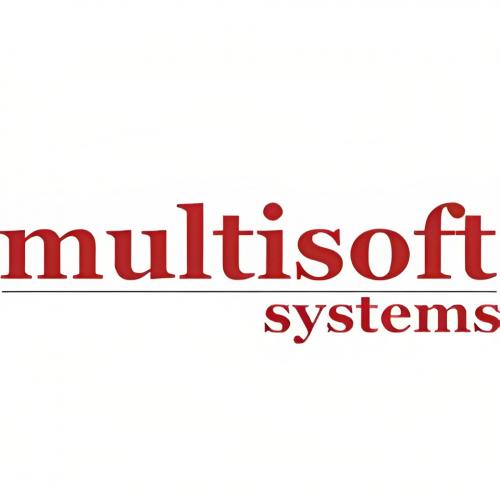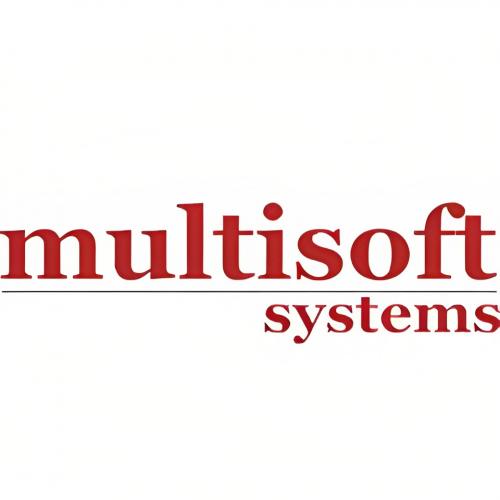The Ultimate DevOps Training Guide

Welcome
to our comprehensive guide on DevOps Training! DevOps is
not just a set of practices but a culture and philosophy that is reshaping the
software development and operational landscape. With the increasing adoption of
cloud computing, big data, and agile methodologies, DevOps has become an
indispensable part of the tech industry. This guide aims to provide you with a
thorough understanding of DevOps, from its core practices and tools to how you
can effectively implement its principles in your organization.
Whether
you are a beginner looking to enter the world of DevOps or an experienced
professional aiming to enhance your skills, this blog by Multisoft
Systems will serve as your roadmap to mastering DevOps.
Definition
of DevOps
DevOps
is an amalgamation of 'Development' and 'Operations', embodying a culture, set
of practices, and tools that aim to enhance an organization's ability to
deliver applications and services at high velocity. Unlike traditional software
development approaches, DevOps bridges the gap between software development
(Dev) and IT operations (Ops), promoting a seamless collaboration that not only
speeds up the development process but also improves its quality. This approach
emphasizes automation, continuous integration, and continuous delivery,
allowing teams to respond more quickly to changes in the market and their
customers' demands.
Importance
of DevOps in Modern Software Development
In
the rapidly evolving digital world, DevOps has become crucial for any
organization striving to maintain a competitive edge. By fostering a culture of
collaboration and streamlining the various stages of development, from design
through the development process to production support, DevOps helps in:
Increasing
Deployment Frequency: DevOps practices like Continuous Integration (CI) and Continuous
Delivery (CD) allow for more frequent code updates to production, thus
accelerating the product lifecycle.
Enhancing
Release Velocity: Automation tools used in DevOps enable quicker release cycles,
reducing the lead time between fixes or new features and deployment.
Improving
Defect Detection: With practices like automated testing and continuous monitoring,
DevOps helps in early identification of issues, which can be addressed faster,
thus reducing the downtime and improving service reliability.
Reducing
Deployment Failures and Rollbacks: By ensuring more consistent and
reliable processes for deployment, DevOps reduces the likelihood of errors
during release and simplifies the rollback process if something goes wrong.
Ensuring
Higher Quality: Continuous integration and testing improve the product quality,
reducing the bugs and improving performance which ultimately enhances user
satisfaction.
Enhancing
Team Empowerment and Productivity: DevOps fosters a culture of responsibility
and ownership, where each team member is involved in the process and empowered
to make decisions, which boosts team morale and efficiency.
Through
this blog, whether you're a novice looking to understand what DevOps is or an
experienced professional aiming to refine your skills and understanding, you'll
find valuable information to guide you on your journey in DevOps training.
The
DevOps Lifecycle
DevOps
is not just a methodology but a continuous cycle that integrates and automates
the processes between software development and IT teams. Here’s an exploration
of each phase in the DevOps lifecycle:
Plan:
The foundation of the DevOps lifecycle, planning involves defining project
goals, identifying requirements, and outlining the resources needed. Tools like
Jira, Trello, and Asana facilitate effective planning and collaboration across
teams.
Code:
During the coding phase, developers write code in a shared development
environment using version control systems like Git. This phase emphasizes the
importance of version control and regular commits to facilitate collaboration
and traceability.
Build:
In this stage, code written by developers is integrated into a shared
repository. The build process involves compiling code into executable files or
scripts. Continuous Integration tools such as Jenkins, Travis CI, and CircleCI
automate the build process and help in detecting problems early.
Test:
Automated testing is a crucial phase where the application is tested for
defects. This includes various types of automated tests like unit testing,
integration testing, and functional testing. Selenium, JUnit, and TestNG are
commonly used tools that help in ensuring that the code changes meet the
required quality standards.
Release:
The release phase involves the preparation of the application for deployment.
This can include final changes to configuration and other pre-release checks.
Automation tools ensure that the release process is repeatable and consistent,
minimizing human error.
Deploy:
During deployment, the application is moved into the production environment.
Modern DevOps practices typically use automated deployment tools such as
Kubernetes, Docker, and Ansible, which help in managing, scaling, and deploying
applications seamlessly.
Operate:
Operation involves managing the system during production. This includes ongoing
monitoring and logging to ensure that the system operates smoothly. Tools like
Nagios, Prometheus, and Splunk provide real-time insights into the operational
health of the application.
Monitor:
Monitoring involves tracking the behavior of the application and its
infrastructure to proactively address issues before they affect users.
Monitoring helps in understanding how the changes affect the system and leads
to better decision-making for future releases.
Key
DevOps Principles
Automating
the integration and delivery process to ensure that the software can be
reliably released at any time.
Automating
as much of the software development process as possible to reduce manual work
and increase efficiency.
Encouraging
open communication and close collaboration within and between teams to break
down silos and enhance team agility.
Adopting
an iterative approach to software development and deployment to continually
adapt and improve the product.
Leveraging
monitoring tools to constantly gather feedback and insights from operations
which can be used to improve future development cycles.
Benefits
of Adopting Devops
Improved
Deployment Frequency: DevOps enables more frequent deployment of updates and improvements,
keeping the product adaptive and competitive.
Faster
Time to Market: By integrating and automating processes, DevOps can
significantly reduce the time from development to operation.
Higher
Quality Products: Continuous testing and feedback allow for improving product
quality by identifying and fixing defects quickly.
Enhanced
Customer Satisfaction: Rapid deployments and high-quality applications lead to a better
customer experience.
Increased
Efficiency and Reduced Costs: Automation reduces repetitive
manual tasks, freeing up resources which can be utilized for more critical
work, thereby reducing overall costs.
Better
Risk Management: Frequent iterations and improved test automation reduce the
security and operational risks associated with traditional release processes.
Understanding
and implementing these aspects of DevOps certification can
transform an organization’s ability to develop, deliver, and maintain its
applications and services at a high pace, ultimately leading to a stronger,
more competitive position in the market.
Core
DevOps Practices
DevOps
practices are designed to enhance collaboration across the development and
operations teams, automate workflows, and improve the efficiency and quality of
software development and deployment. Here are some of the fundamental practices
in DevOps:
Continuous
Integration (CI)
Continuous
Integration (CI) is a development practice where developers integrate code into
a shared repository frequently, preferably several times a day. Each
integration is then verified by an automated build and automated tests. This
practice allows teams to detect errors quickly, and locate them more easily. By
integrating regularly, you can detect and address conflicts among development
workloads early, making it easier to manage changes. Tools like Jenkins,
CircleCI, and Travis CI are popular choices for automating this process,
enabling developers to maintain a high standard of code quality and streamline
the development process.
Continuous
Delivery (CD)
Continuous
Delivery (CD) extends CI by ensuring that, in addition to automated testing,
all code changes can be deployed to a production-like environment and tested
for performance and usability. This practice ensures that the software being
developed is always in a deployable state. The goal of CD is to build, test,
and release software faster and more frequently by automating the delivery
process. Tools such as Spinnaker and GitLab CI can help automate these steps to
ensure smooth and frequent deployments that are ready to be released to
customers at any time.
Infrastructure
as Code (IaC)
Infrastructure
as Code (IaC) is a key DevOps practice that involves managing and provisioning
computing infrastructure through machine-readable definition files, rather than
physical hardware configuration or interactive configuration tools. By using
code to automate the setup and maintenance of infrastructure, teams can quickly
deploy and configure servers and other infrastructure components consistently
and without human error. Tools like Terraform, Ansible, and AWS CloudFormation
allow teams to script environments—from networks and servers to individual
application configurations—making it easier to replicate safe and predictable
environments in every development, staging, and production scenario.
Monitoring
and Logging
Monitoring
and logging are crucial for maintaining the reliability, availability, and
performance of applications and infrastructure. These practices involve
collecting, analyzing, and displaying logs and metrics from applications and
infrastructure to diagnose and resolve issues. Effective monitoring helps in
proactive notification of performance issues and potential outages, while
logging provides insight into the behavior of the application or system over
time. Tools such as Prometheus, Grafana, and ELK Stack (Elasticsearch,
Logstash, Kibana) are widely used for monitoring applications and
infrastructure to ensure they function optimally and to improve decision-making
processes.
Communication
and Collaboration
At
the heart of DevOps is the principle of enhancing communication and collaboration
within and between teams involved in software development and operations.
DevOps practices encourage breaking down silos and sharing responsibilities to
improve the team's efficiency and the quality of the final product. Tools like
Slack, Microsoft Teams, and Confluence facilitate seamless communication, while
collaborative planning tools like Jira and Trello integrate with technical
workflows to help teams stay aligned. Regular meetings, comprehensive
documentation, and clear communication channels ensure that everyone—from
developers and testers to operations staff—is aligned and informed throughout
the development lifecycle.
These
core practices form the backbone of effective DevOps strategies, enabling
organizations to deliver applications and services at higher velocity and
better quality, driving significant business value.
Conclusion
Adopting
DevOps practices offers transformative potential for businesses aiming to
enhance their software development and operational efficiencies. Through
continuous integration, continuous delivery, infrastructure as code, along with
robust monitoring and proactive communication, organizations can achieve faster
deployments, improved reliability, and higher product quality. Embracing these
practices not only accelerates the pace of innovation but also fosters a
culture of collaboration and continuous improvement. As companies look to
thrive in a digital-first world, integrating Devops methodologies becomes not
just beneficial but essential, ensuring they remain competitive and responsive
to rapidly changing market demands.








Comments